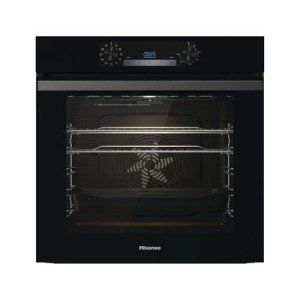Understanding Built-In Electric Ovens: A Comprehensive Guide
Over the last few years, the kitchen has changed from merely a cooking area to a hub for household events, amusing guests, and delighting in quality time. One of the most pivotal components of modern culinary experiences is the kitchen oven. Built-in electric ovens have actually acquired tremendous appeal, thanks to their space-saving styles, smooth aesthetic appeals, and advanced functions. This article supplies an in-depth exploration of built-in electric ovens, covering their types, advantages, setup considerations, maintenance suggestions, and an extensive FAQ section.
What Are Built-In Electric Ovens?
Built-in electric ovens are integrated cooking systems developed to be installed directly into kitchen cabinets or walls. Unlike conventional freestanding ovens, built-in designs offer a smooth appearance, adding to the total style of the kitchen area. They come geared up with various cooking functions, advanced innovation, and energy-efficient features.
Kinds Of Built-In Electric Ovens
Built-in electric ovens can be found in different styles to meet diverse culinary needs and kitchen styles. Here are the most typical types:
- Single Ovens: Ideal for smaller sized kitchens, single ovens provide ample cooking space for daily meals without taking up too much room.
- Double Ovens: For passionate cooks or families that take pleasure in hosting dinner parties, double ovens supply the ability to prepare multiple meals at various temperatures concurrently.
- Wall Ovens: Wall ovens are mounted at eye level, making them easily accessible while eliminating the requirement to bend down. They typically come in single or double setups.
- Mix Ovens: These flexible appliances combine standard oven cooking with microwave performance, enabling quicker cooking times while protecting food flavor and texture.
- Steam Ovens: Designed for health-conscious cooks, steam ovens utilize steam to cook food, protecting moisture and nutrients. They are ideal for vegetables, fish, and rice meals.
Advantages of Built-In Electric Ovens
Built-in electric ovens offer numerous benefits for homeowners seeking to enhance their cooking experience. Some of the benefits include:
- Aesthetic Appeal: Their smooth design permits greater design versatility, fitting seamlessly into kitchen cabinets and producing a polished appearance.
- Area Efficiency: Built-in ovens save important flooring area, making them an excellent option for compact kitchen areas.
- Enhanced Functionality: Many built-in electric ovens incorporate the most recent cooking innovations, such as convection cooking, clever controls, and numerous cooking modes.
- Easy Accessibility: Models installed at eye level are easier to access, decreasing stress while checking or eliminating food.
- Increased Home Value: Installing a top quality built-in electric oven can boost the resale value of a home due to its modern-day and exceptional features.
Setup Considerations
While built-in electric ovens use numerous benefits, proper installation is important to ensure they operate optimally. Below are key factors to consider to keep in mind:
- Cabinet Size: Ensure that the cabinetry where the oven will be installed is sized correctly. Many built-in ovens come with particular measurements that must be complied with during setup.
- Electrical Requirements: Built-in electric ovens need a dedicated electrical supply. Property owners ought to consult a certified electrical contractor to make sure that the circuitry fulfills the necessary requirements.
- Ventilation: Unlike gas ovens, electric ovens usually do not need venting, however adequate air flow is necessary to avoid overheating.
- Placement: Consider the oven's positioning worrying kitchen workflow. It ought to be quickly accessible while thinking about clearances from other kitchen appliances.
Setup Steps
- Step the cabinet area to make sure the oven fits.
- Ensure the electrical supply is prepared.
- Thoroughly place the oven within its designated cabinet.
- Protect it according to producer guidelines.
- Link to power and test its functionality.
Maintenance Tips for Built-In Electric Ovens
To lengthen the life of a built-in electric oven and guarantee its reliable efficiency, implement these maintenance ideas:
- Regular Cleaning: Wipe spills and discolorations after each usage. Usage appropriate cleaners, preferably mild, to avoid harming the interior surfaces.
- Examine Seals: Inspect the door seals for cracks or damage, and change them if necessary to keep effectiveness.
- Adjust Temperature: Over time, ovens might lose accuracy. Utilize an oven thermometer to validate temperature level readings and recalibrate if needed.
- Yearly Professional Service: Schedule a professional examination and maintenance service at least once a year for comprehensive checks and repair work.
Frequently Asked Questions (FAQs)
1. What size built-in electric oven do I require?
The size of the oven should depend on your kitchen layout and cooking requirements. Requirement wall ovens normally range from 24 to 30 inches in width.
2. Can I install a built-in electric oven myself?
While some property owners might have the skills to install their oven, it is typically advisable to hire a professional to guarantee proper setup and compliance with safety standards.
3. What gas hob electric oven built in should I try to find in a built-in electric oven?
Think about features like convection cooking, self-cleaning options, wise innovation, and numerous cooking modes to enhance your cooking experience.
4. How much does a built-in electric oven expense?
Costs range significantly based upon brand, functions, and size. A basic model might start around ₤ 500, while high-end options can exceed ₤ 3,000.
5. Are built-in electric ovens energy-efficient?
Most modern electric ovens come geared up with energy-efficient innovations, helping to reduce energy consumption while keeping cooking efficiency.
Built-in electric ovens use a blend of style, benefit, and advanced cooking abilities, making them an essential addition to today's kitchens. By comprehending the types, benefits, installation factors to consider, and proper upkeep, house owners can make educated choices that optimize their cooking experiences while improving their kitchen's visual appeals. Whether one is a skilled chef or a casual cook, buying a built-in electric oven can change the cooking experience into a wonderful cooking journey.

